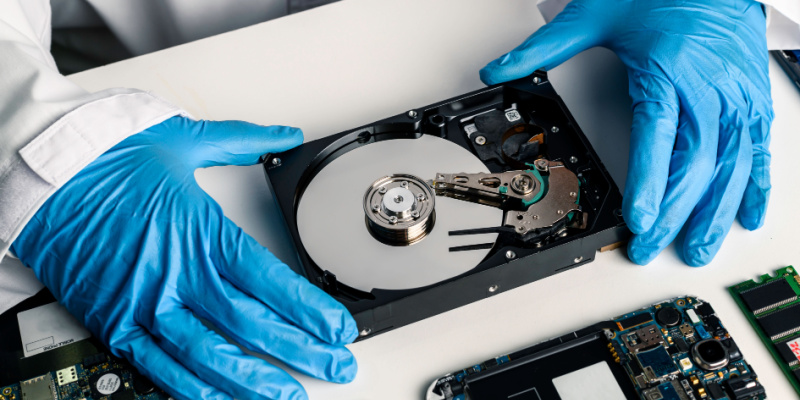Navigating the Maze of HDD Data Recovery: A Comprehensive Guide
In today’s digital age, data is the lifeblood of businesses and individuals alike. Hard Disk Drives (HDDs) have been a reliable storage medium for decades, but they are not immune to failures or data loss. When your precious data is at stake, understanding HDD data recovery becomes crucial. In this comprehensive guide, we will delve into the intricacies of HDD data recovery, exploring its importance, common causes of data loss, and the steps to recover lost data.
The Importance of HDD Data Recovery
HDD data recovery is the process of retrieving lost or inaccessible data from a malfunctioning or damaged hard drive. Whether it’s a personal computer, a business server, or an external drive, the need for data recovery can arise unexpectedly. The importance of HDD data recovery can be summed up in a few key points:
Protecting Valuable Data: HDDs store vital information, such as documents, photos, videos, and databases
Losing this data can have severe consequences for both individuals and organizations.
Minimizing Downtime: For businesses, data loss can lead to operational disruptions and financial losses Swift data recovery can help minimize downtime and maintain business continuity
Saving Costs: Reconstructing lost data can be more cost-effective than recreating it from scratch Professional data recovery services can often retrieve data that seems irrecoverable
Common Causes of Data Loss
Understanding the common causes of data loss is the first step in preventing it. Here are some frequent culprits:
Hardware Failure: HDDs are mechanical devices with moving parts that can wear out over time. Head crashes, motor failures, or electronic component malfunctions can render the drive inaccessible.
Human Error: Accidental deletion, formatting, or overwriting of files is a common cause of data loss. It’s essential to have a reliable backup strategy in place.
Viruses and Malware: Malicious software can corrupt files or make them inaccessible. Regularly updating antivirus software and practicing safe browsing habits can mitigate this risk.
Power Surges and Outages: Sudden power disruptions can result in data corruption or drive failure. Using surge protectors and uninterruptible power supplies (UPS) can help prevent this.
Physical Damage: Data loss may result from physical harm to the hard drive, such as dropping it or subjecting it to extremely high or low temperatures or moisture.
Steps to Recover Lost Data
When data loss occurs, it’s crucial to act swiftly to maximize the chances of successful recovery. Here are the steps to follow:
Stop Using the Drive: You should cease using the impacted hard drive as soon as you detect data loss. Ongoing use may cause the lost data to be overwritten, making recovery more difficult.
Assess the Situation: Determine the cause of data loss and the extent of the damage. This assessment will help you decide whether to attempt recovery on your own or seek professional help.
DIY Recovery: If the data loss is due to a logical issue (e.g., accidental deletion or formatting), you can try using data recovery software. Make sure to follow the instructions carefully and avoid writing any new data to the drive.
Professional Data Recovery: For physical damage or complex data loss scenarios, it’s best to consult a professional data recovery service. They have specialized tools and expertise to recover data from damaged drives.
Backup your Data: Once you’ve successfully recovered your lost data, make sure to create backups to prevent future data loss.
Conclusion
HDD data recovery is a critical skill and service in our data-dependent world. Whether you’re an individual user or a business owner, understanding the importance of data recovery and knowing the common causes of data loss can help you take proactive measures to protect your valuable information. Remember that prevention, through regular backups and safe data handling practices, is the best strategy, but when data loss strikes, quick and informed action is key to successful recovery. Whether you choose to go the DIY route or enlist the help of professionals, the goal remains the same: to retrieve your precious data and safeguard it against future losses.

